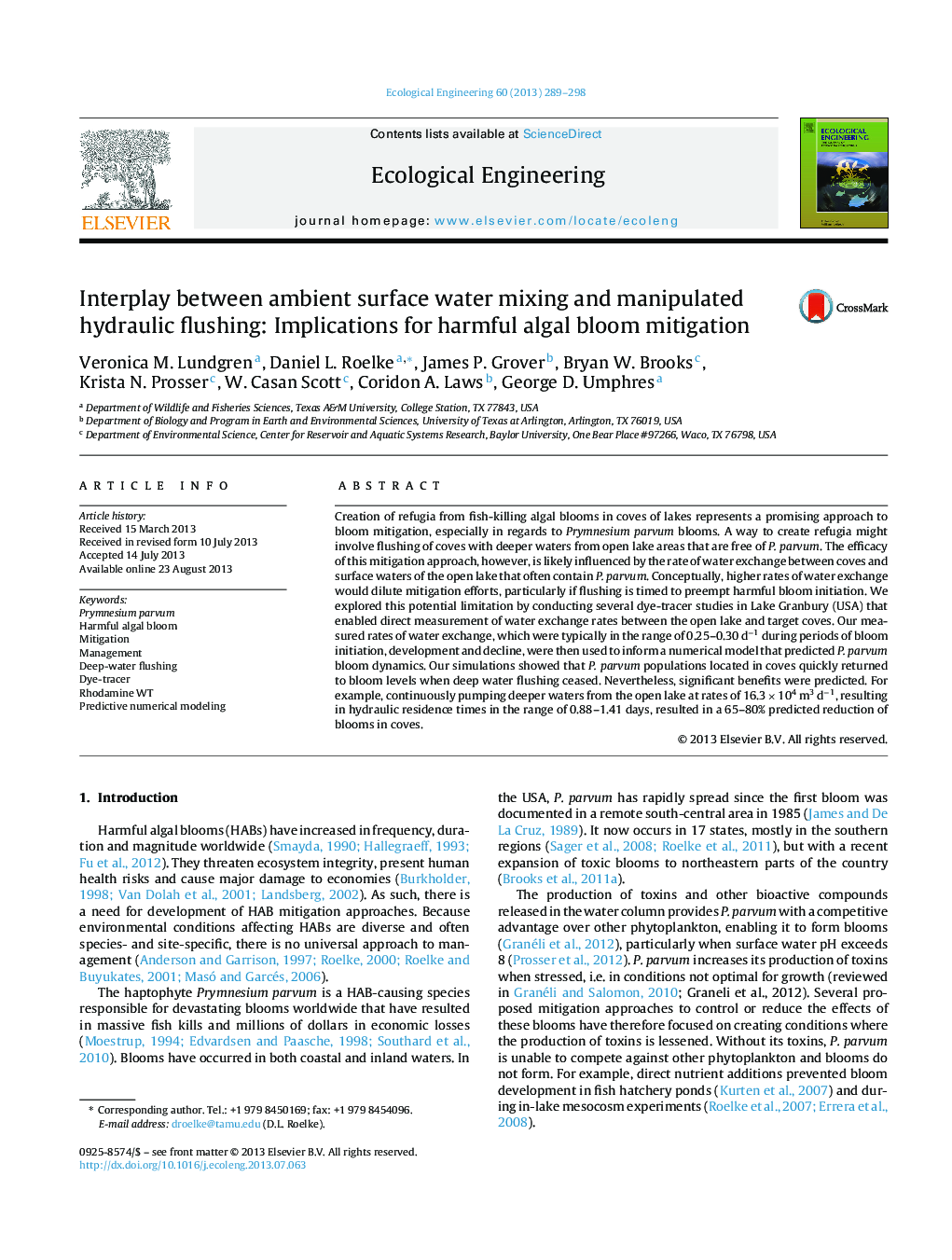| Article ID | Journal | Published Year | Pages | File Type |
|---|---|---|---|---|
| 6302414 | Ecological Engineering | 2013 | 10 Pages |
Abstract
Creation of refugia from fish-killing algal blooms in coves of lakes represents a promising approach to bloom mitigation, especially in regards to Prymnesium parvum blooms. A way to create refugia might involve flushing of coves with deeper waters from open lake areas that are free of P. parvum. The efficacy of this mitigation approach, however, is likely influenced by the rate of water exchange between coves and surface waters of the open lake that often contain P. parvum. Conceptually, higher rates of water exchange would dilute mitigation efforts, particularly if flushing is timed to preempt harmful bloom initiation. We explored this potential limitation by conducting several dye-tracer studies in Lake Granbury (USA) that enabled direct measurement of water exchange rates between the open lake and target coves. Our measured rates of water exchange, which were typically in the range of 0.25-0.30Â dâ1 during periods of bloom initiation, development and decline, were then used to inform a numerical model that predicted P. parvum bloom dynamics. Our simulations showed that P. parvum populations located in coves quickly returned to bloom levels when deep water flushing ceased. Nevertheless, significant benefits were predicted. For example, continuously pumping deeper waters from the open lake at rates of 16.3Â ÃÂ 104Â m3Â dâ1, resulting in hydraulic residence times in the range of 0.88-1.41 days, resulted in a 65-80% predicted reduction of blooms in coves.
Related Topics
Life Sciences
Agricultural and Biological Sciences
Ecology, Evolution, Behavior and Systematics
Authors
Veronica M. Lundgren, Daniel L. Roelke, James P. Grover, Bryan W. Brooks, Krista N. Prosser, W. Casan Scott, Coridon A. Laws, George D. Umphres,
